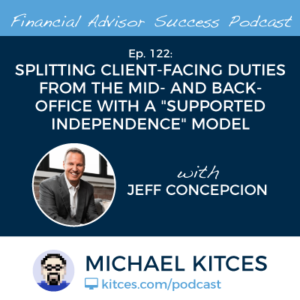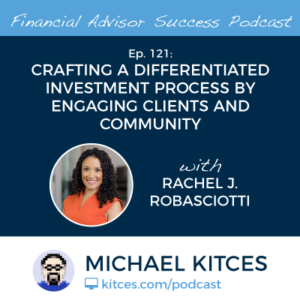Welcome to the May 2019 issue of the Latest News in Financial Advisor #FinTech – where we look at the big news, announcements, and underlying trends and developments that are emerging in the world of technology solutions for financial advisors and wealth management!
This month's edition kicks off with the news that Schwab’s PortfolioConnect is now available – for free – to all RIAs on its platform. Thus far, PortfolioConnect is a downscale portfolio performance reporting system that is meant to appeal to "smaller" RIAs, with less than $100M of AUM, for whom the other performance reporting tools may be too costly and who may be attracted to the Schwab platform for the potential cost savings of a free alternative. But the real question is what happens if and when Schwab adds more features to PortfolioConnect and it becomes a more head-to-head competitive offering to the likes of Orion and Black Diamond… but available for free, because Schwab can profit indirectly from its core custodial business simply by attracting RIAs and their clients’ assets to the platform.
From there, the latest highlights also include a number of other interesting advisor technology announcements, including:
- Envestnet launches a new Credit Exchange to facilitate independent advisors offering mortgages and eventually business loans to clients as a part of a more holistic advice offering (and providing Envestnet yet another means to monetize transactions that occur across its platform)
- Fidelity announces a further expansion of its Integration XChange as the company continues its shift towards a more open architecture approach (building around Consolidated Data as its unique value proposition instead)
- MoneyTree financial planning software is acquired by Accutech as the company goes deeper into wealth management in the bank and trust channel (and raising questions about the fate of MoneyTree’s traditional financial advisor user base)
- The former TradeWarrior leadership team relaunches as AdvisorPeak rebalancing software after a falling out with Oranj
- Vestwell raises a massive $30M Series B round from Goldman Sachs to scale up its digital 401(k) platform for independent advisors (and giving Goldman Sachs another toe-hold into the RIA channel)
Read the analysis about these announcements in this month's column and a discussion of more trends in advisor technology, including Invent.us partnering with Envestnet to bring cloud-native software design to replace legacy broker-dealer technology systems, Allianz invests into Halo Investing’s tools for designing custom structure notes (and perhaps in the future, custom indexed annuities?), FINRA established a new Office of Financial Innovation to support FinTech developments, and “cash” becomes the new battleground to compete for assets as Wealthfront boosts its AUM by 8% in just a few months by offering a competitive cash yield over 2% (while RIA custodians continue to scrape the bulk of their profits from advisors’ client cash instead!).
And be certain to read to the end, where we have provided an update to our popular new “Financial Advisor FinTech Solutions Map” as well!
I hope you're continuing to find this new column on financial advisor technology to be helpful! Please share your comments at the end and let me know what you think!
*And for #AdvisorTech companies who want to submit their tech announcements for consideration in future issues, please submit to TechNews@kitces.com!

 Welcome back to the 122nd episode of Financial Advisor Success Podcast!
Welcome back to the 122nd episode of Financial Advisor Success Podcast! Welcome back to the 121st episode of Financial Advisor Success Podcast!
Welcome back to the 121st episode of Financial Advisor Success Podcast!
